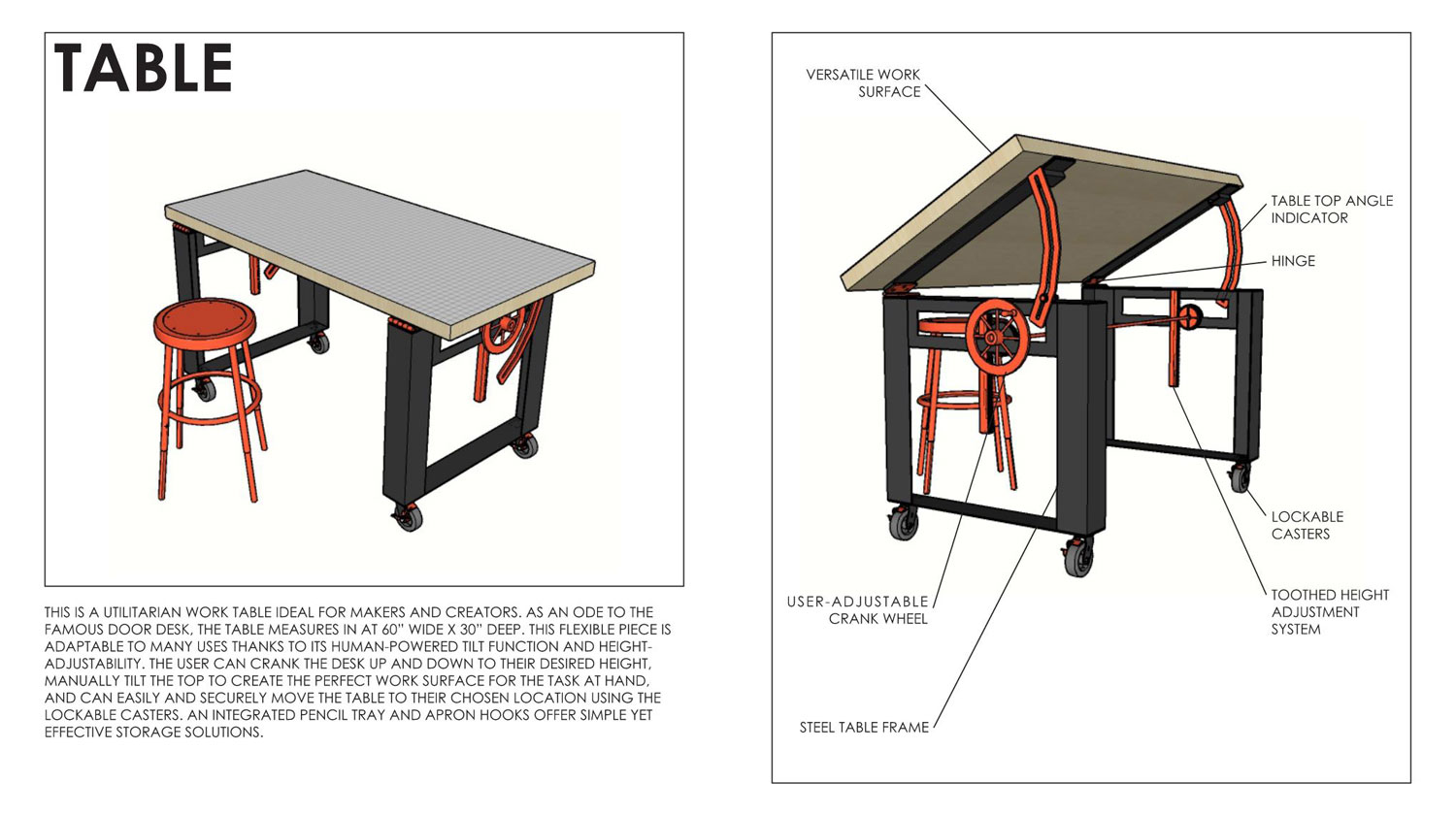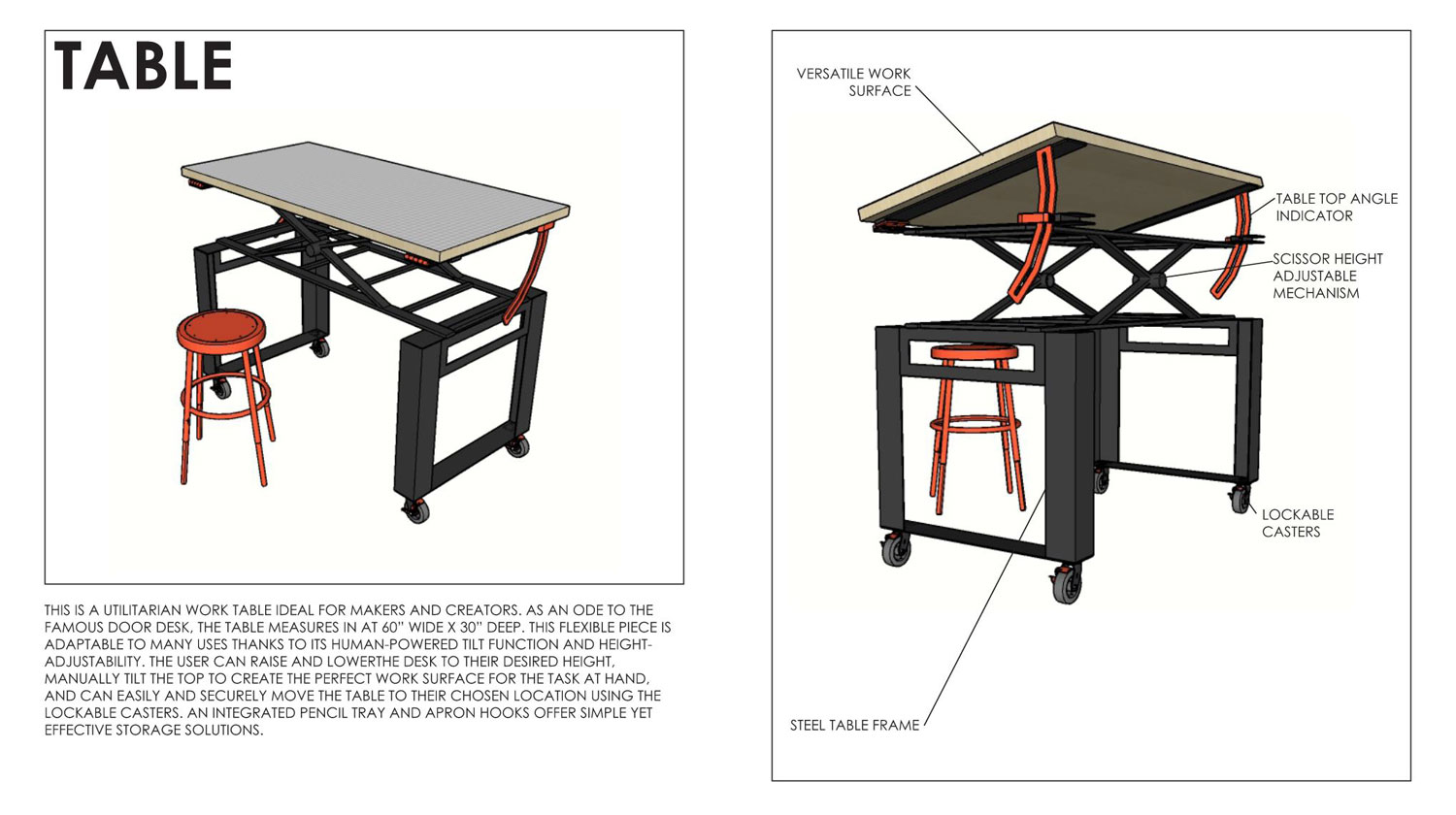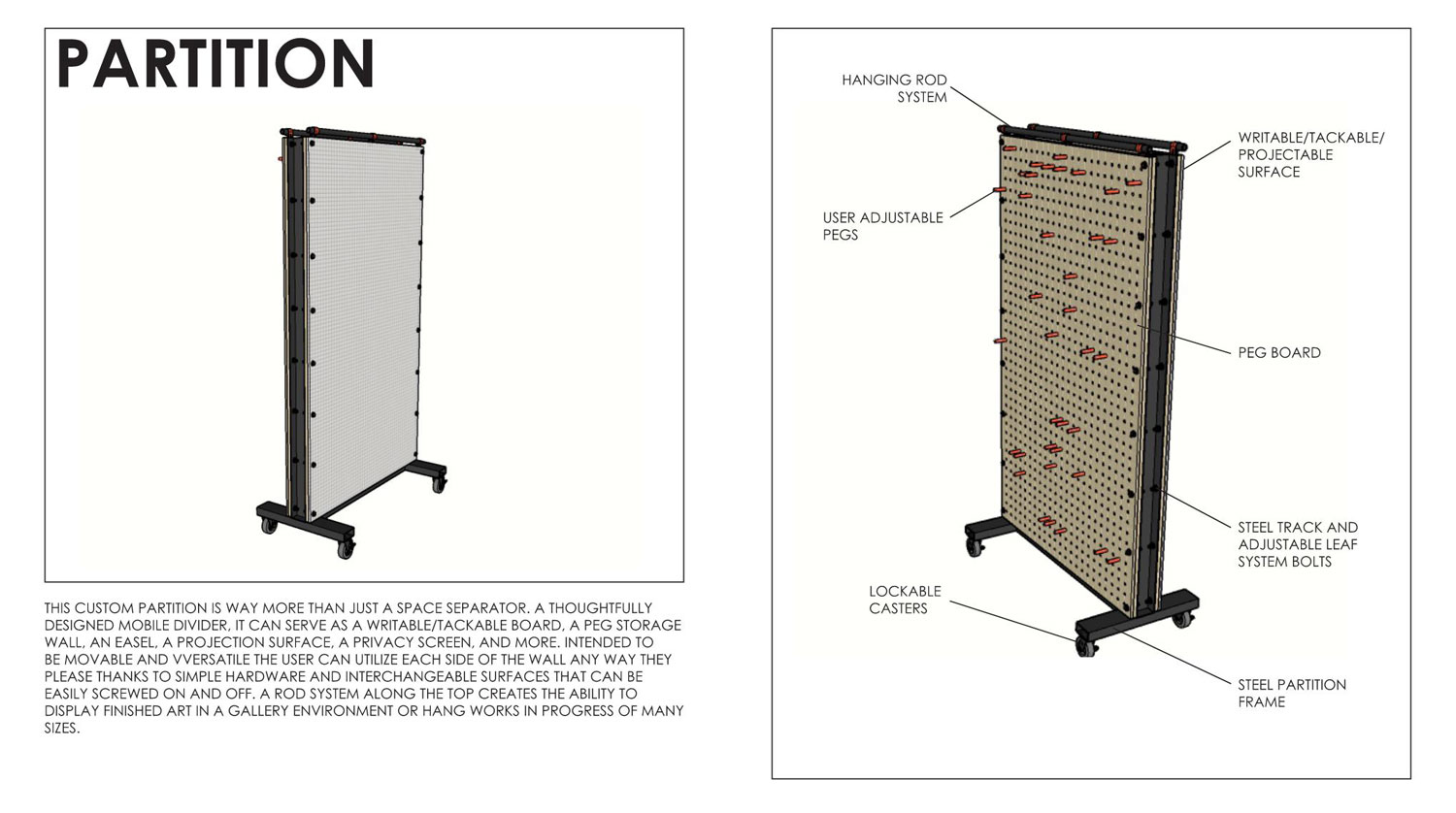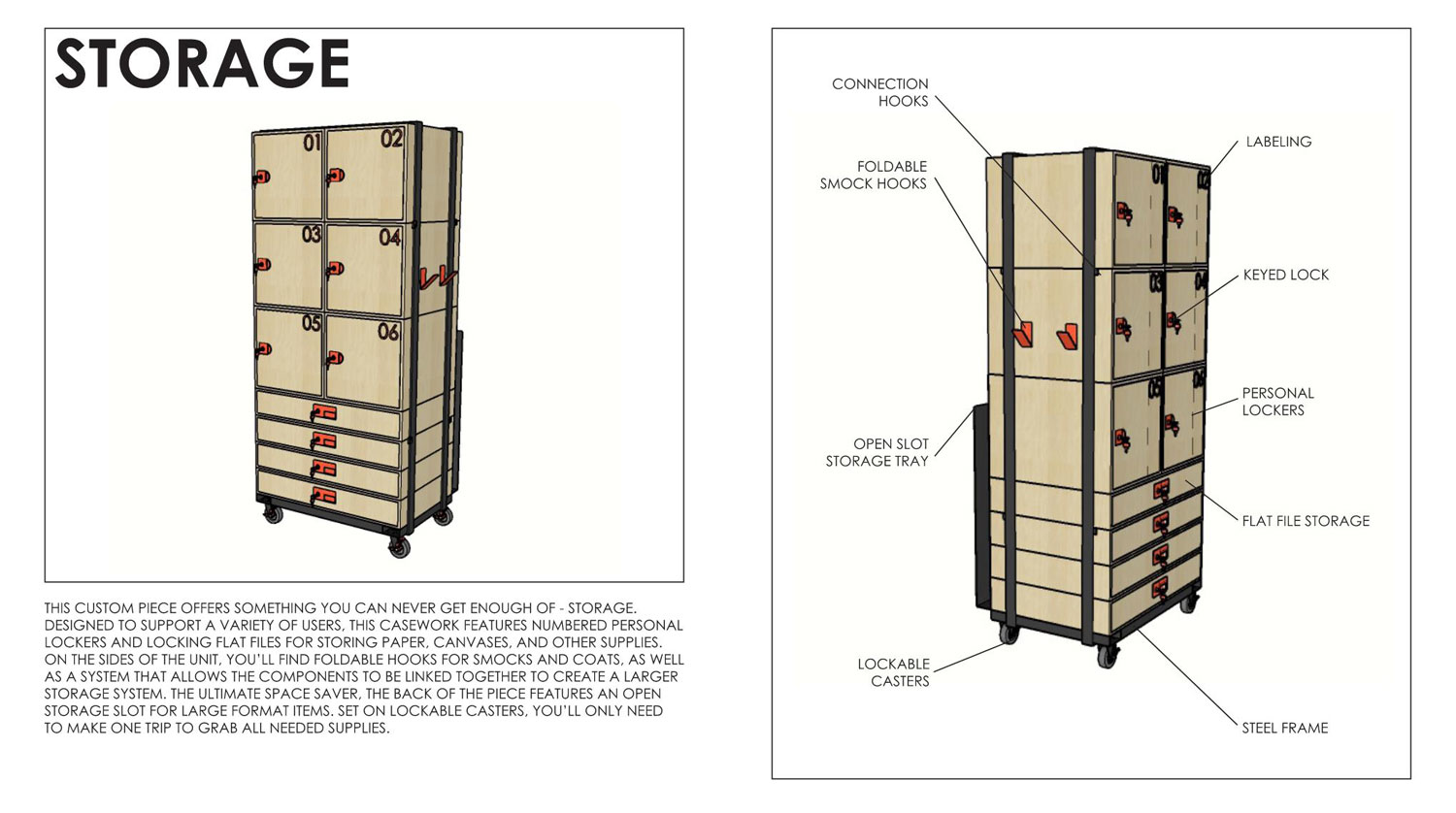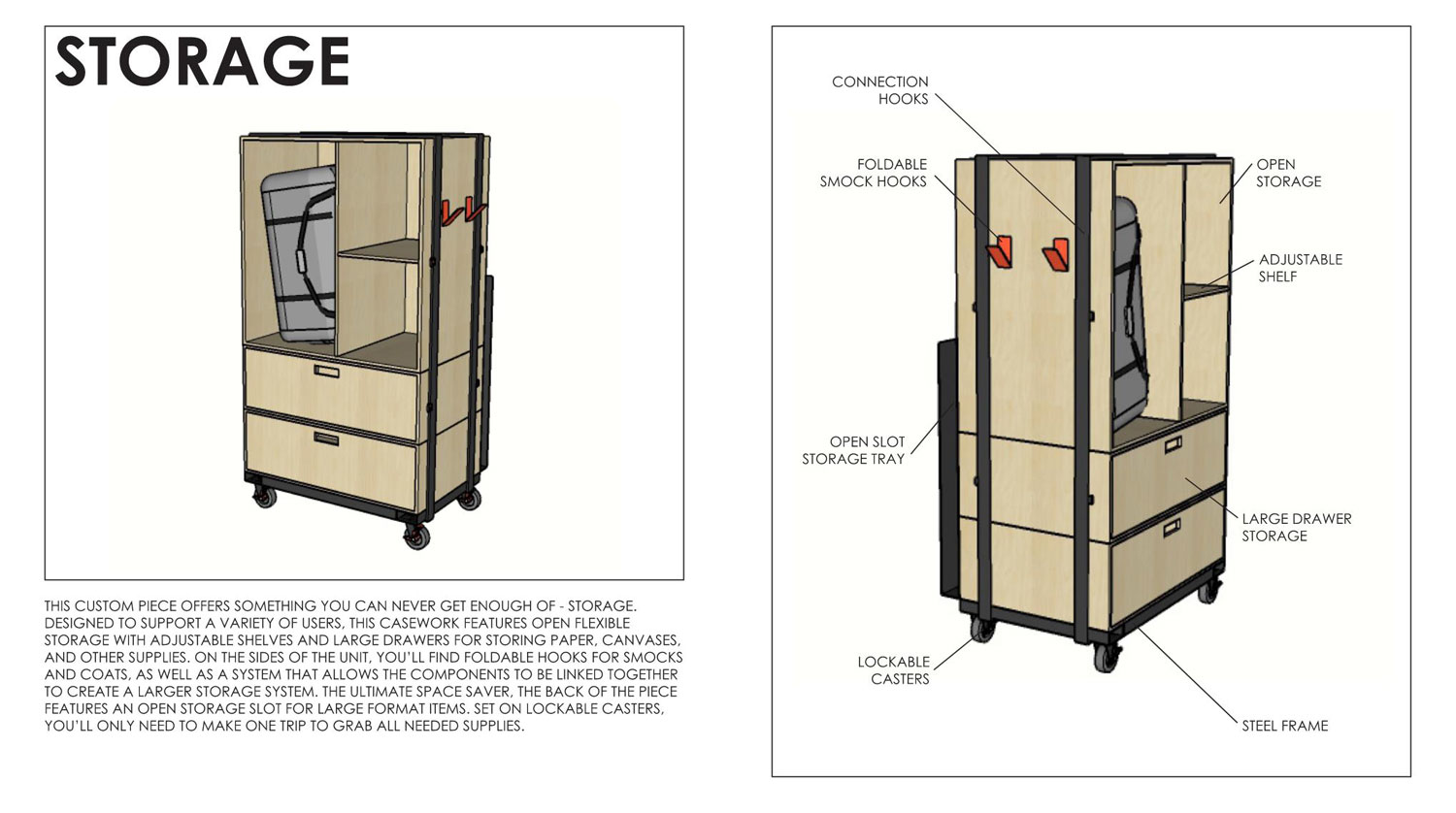Up for the Task: Custom-Designed Furniture That Does It All
Learn how a team from Cushing Terrell, Corti Construction, and Cumming Corporation (above) designed mobile, flexible furniture to support a space for artists and creatives.
With just a little imagination, a single piece of furniture can serve a broad range of functions. A dining room table, for example, often becomes a place for art projects, card games, and even an office workspace (especially in the past year). But a dining table was built primarily as a place for eating, and its design isn’t necessarily ideal for other uses. However, if you consider all possible activities right from the start of the design process, you can create a rather multifunctional piece of furniture.
A client in Seattle approached Cushing Terrell for just such a project: to design furniture that could function in a space that would have a variety of uses. The locale would serve as an artist’s studio, event space, classroom, and whatever else its users could dream up. The challenge was to design furniture that could be usable in any number of these circumstances. After speaking to the client and the space’s first artist-in-residence, the design team began the project by developing a use-case matrix.

Jessica Earp, Interior Designer, Cushing Terrell
Jessica Earp, a Cushing Terrell interior designer who worked on the project, said: “We listed out any and every kind of art program that could happen in the space. We studied what those different use-cases would look like and created this matrix where we reviewed what items, programs, furniture, and equipment you would need for each.”
The team’s goal was to design pieces that could be changeable, mobile, and flexible within the space so they could be used in as many ways possible. No individual item would support every function needed, but each piece would be thoughtfully developed to support multiple uses.
The resulting pieces are industrial in style and function, able to be shifted by hand for a variety of purposes. Each piece is set on wheels for easy relocation, and they can be linked together to create a larger piece because they were designed within a similar family of dimensions. All of the parts of the furniture that can be adjusted by the user are delineated using the same color (yellow in this case), so it’s clear which elements they can manipulate.
The team refers to the desk they designed as the project’s powerhouse. The desk’s work surface can be tilted and the height adjusted, while its lockable casters allow it to be securely relocated and even ganged together with other desks. Additionally, it features storage solutions, such as a pencil tray and apron hooks.
Another favorite piece from the project was the partition, which oversimplifies an item that could be used for and called many things. The piece can be deployed, as the name suggests, as a partition to create privacy or block public views of in-progress artwork. There’s a gallery function that allows art to be hung vertically, and when the partitions are brought together, they can be used as a projection screen or performance backdrop. One side of the partition can be used as a whiteboard, while the other features a pegboard wall for storage. There’s also space for a cord to run between the two walls of the partition for lighting or other electrical needs.
Other custom pieces for the space included storage units and benches — all of which serve a variety of purposes and can be easily moved or locked together.

“In the first meeting we had for this project, we honestly had no clue what to expect,” Jessica said. “They left it up to us to create and propose the best solution for the space. But from that very first meeting, they used words like flexible, mobile, and changeable. We knew if we wanted these pieces to be workhorses, we’d have to create something specific for the space. They liked the idea that the project had its own artistic journey — art created along the way through this custom furniture.”
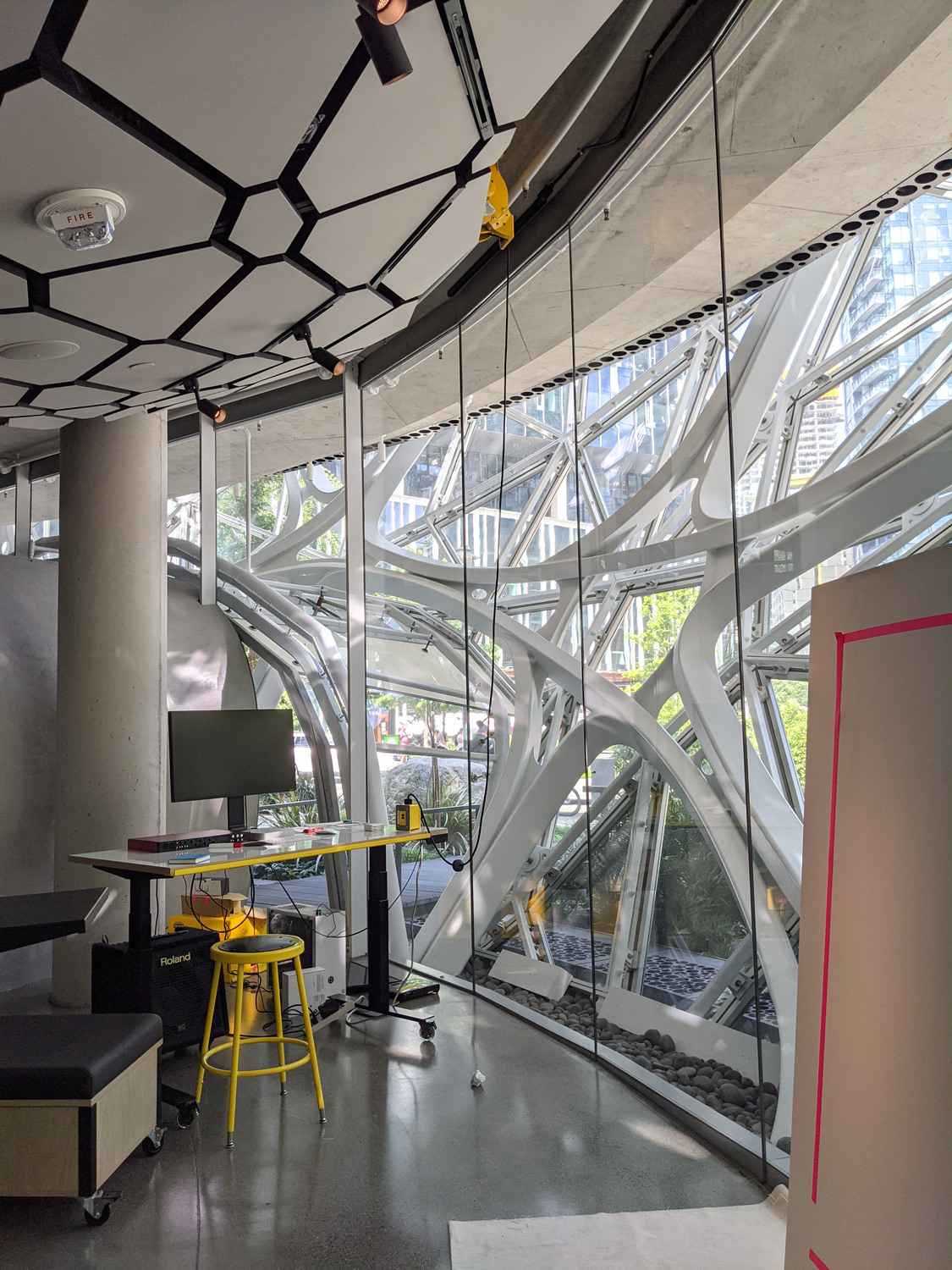
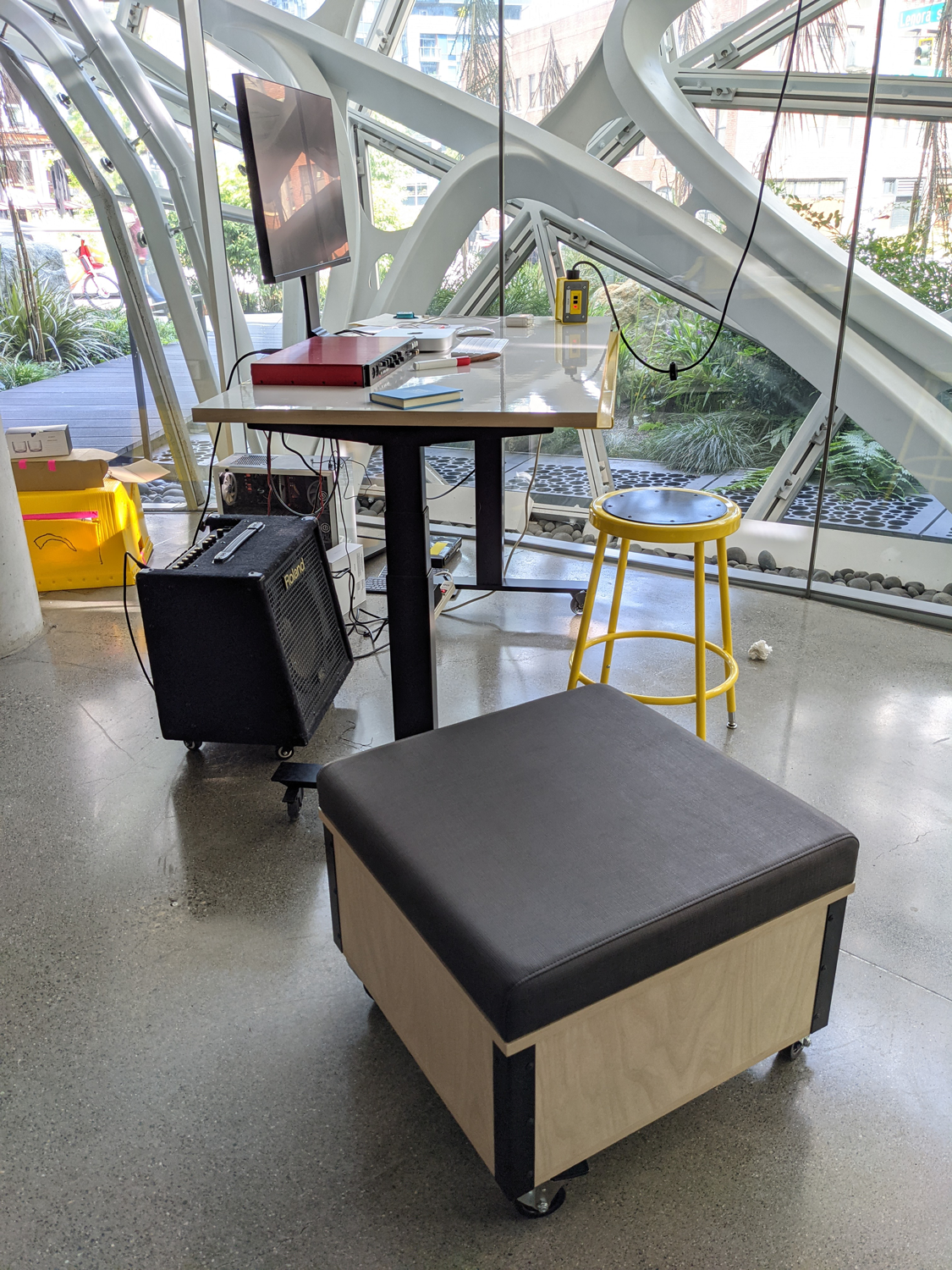
Here you can see the furniture in action in the actual space; this shows the desk and bench with overhead, flexible power drops.
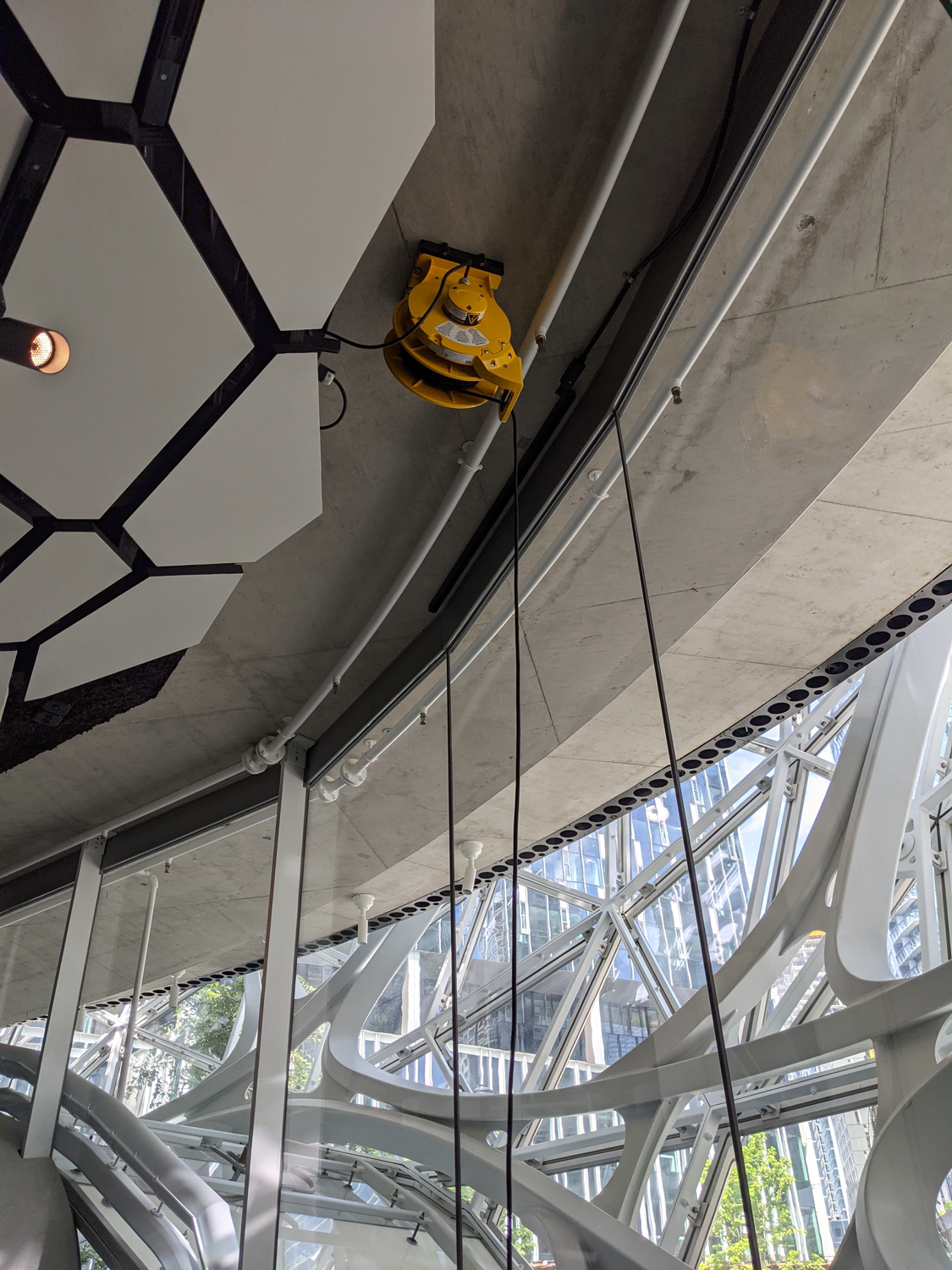
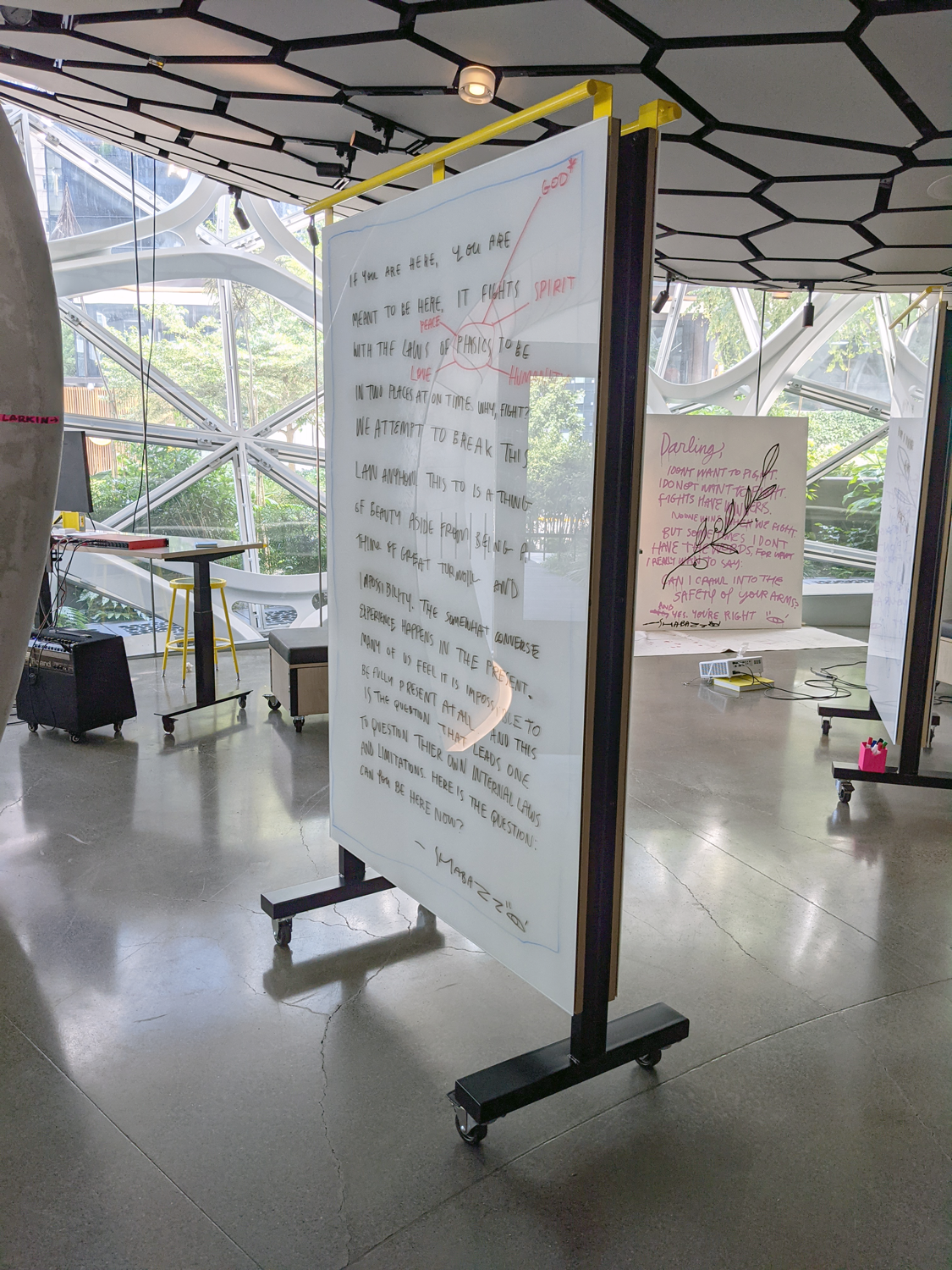
Yellow pull-down power extension cords (also called power drops) are used in flexible spaces like this studio to provide power without limiting it to a specific furniture layout. The partition shown here can offer privacy, or function as a room divider, display wall, or white board.
Whatever the task, our creative team is up for it!
Learn more about the people behind the design and what it’s like to work with Cushing Terrell.

